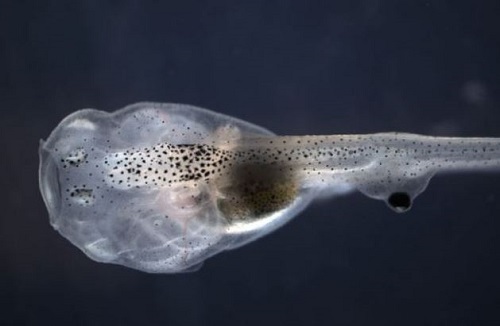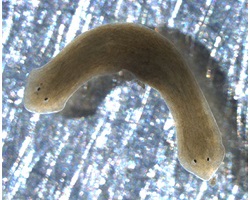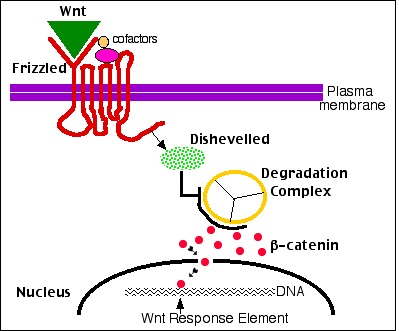|
TRANSLATE THIS ARTICLE
Integral World: Exploring Theories of Everything
An independent forum for a critical discussion of the integral philosophy of Ken Wilber
  Frank Visser, graduated as a psychologist of culture and religion, founded IntegralWorld in 1997. He worked as production manager for various publishing houses and as service manager for various internet companies and lives in Amsterdam. Books: Ken Wilber: Thought as Passion (SUNY, 2003), and The Corona Conspiracy: Combatting Disinformation about the Coronavirus (Kindle, 2020). Frank Visser, graduated as a psychologist of culture and religion, founded IntegralWorld in 1997. He worked as production manager for various publishing houses and as service manager for various internet companies and lives in Amsterdam. Books: Ken Wilber: Thought as Passion (SUNY, 2003), and The Corona Conspiracy: Combatting Disinformation about the Coronavirus (Kindle, 2020). "Science Has No Answer"Ken Wilber's Mistaken Strategy of Belittling ScienceFrank Visser
Does it matter what Ken Wilber thinks about tadpoles and their regenerative powers, or embryos growing two heads or tails?
We've commented on Ken Wilber's spiritual view of evolution more times than we can count (see "The 'Spirit of Evolution' Reconsidered") by pointing out it suffers from the same drawbacks as more well-known creationist accounts. As they often point to the shortcomings of current science, and imply that the Hand of God has been active, or is even now still active, in the intricate workings of Nature, Wilber too often resorts to the strategy of briefly introducing questions of science, and giving them a spiritual twist so as to support his own integral ideology. Integral Meditation: Mindfulness as a Path to Grow Up, Wake Up and Show Up in Your Life (Shambhala, 2016), his latest publication, is no exception to this pattern. In this book on the popular subject of mindfulness, Wilber claims that by developing oneself to higher stages of consciousness, one can align oneself with "the very drive, force, and process of evolution itself". As is well known by readers of Integral World, Wilber sees evolution as being driven by Eros, a universal force towards complexity, and a whole lot of other things as well: 
And that is why a drive to increasing wholeness, increasing inclusiveness, increasing consciousness, increasing love and care and concern and embrace is inherently built into the universe as we know it... And this means that if you yourself practice Integral Mindfulness—which transcends and includes each moment, and does so moment to moment—you are aligning yourself with the very drive, force, and process of evolution itself. And if you want to see evolution as "Spirit-in-action," then you are aligning yourself with Spirit itself, you are aligning yourself with God's will, you are acting as God is acting in this manifest universe moment to moment. (p. 81)
After having introduced his notion of universal spiritual evolution, Wilber proceeds:
But whatever you might think of that, one of the most fascinating aspects of evolution and development is the actual form or pattern of the holons [organisms] that are created by evolution. Because despite the bravura of natural science claiming to understand all of this perfectly, science really has no idea exactly how "morphogenesis" (the creation of form or development itself) comes about. (p. 81)
The first sentence could easily be spoken by the thousands of biologists who have devoted their lives to studying this field of science. However, the second sentence would immediately raise their eyebrows. Since when does science claim to understand something "perfectly"? Reading through the recently published scientific articles in this particular field, one is struck by the careful pointing out of what is known, what is still unknown, and how we might go about to increase our knowledge. Only outsiders might have the impression that "science has all the answers". But though final answers are not to be found in the realm of science, something else—of much higher value—can be found: a method of step-by-step increasing our knowledge, solidly based on observable and repeatable facts. Wilber wants to have none of this: "science really has no idea exactly how "morphogenesis"... comes about." Hello? Nobel prizes have been won by pioneers who have discovered the principles behind morphogenesis. The recent field of evo-devo (evolutionary development) gives fascinating (indeed!) examples of how cells develop into differentiated structures, segments, wings, eyes and all, involving genetic process, cell signaling and chemical gradients. Has Wilber ever taken the trouble to look into this? Not to my knowledge and I have read practically everything Wilber has published, offline and online. It is somewhat odd that Wilber doesn't refer to Rupert Sheldrake, when discussing the concept of morphogenetic fields. Instead, he refers to "the well-known embryologist C.H. Waddington", who invented this term, according to Wilber, "to help explain this mystery". (p. 82). Sheldrake, however, at least has devoted whole books to this subject, and is widely known as the current representative of this view, which has very few supporters from academic science. Where Waddington used the term more or less metaphorical, Sheldrake has given it a realistic meaning: in his view, these morphogenetic fields do act as causes behind the development of biological forms. The majority of scientists understand it to refer to a group of cells which lead to specific organs, such as a head or tail, or a body segment.  Lankavatara Sutra (China) This is obviously a complex area for investigation, but to suggest as Wilber does that "science really has no idea exactly how "morphogenesis"... comes about" is simply unacceptable. Wilber goes on to state that the spiritualist views on these matters are in fact superior to those provided by science. Discussing the problem how proteins are folded in very specific 3D-formations (a problem highlighted by Sheldrake in his first book A New Science of Life (1981) under the heading of "Unsolved Problems of Biology"), and suggesting their form must be stored "somewhere" outside the molecules themselves, Wilber opines:
Science has no answer. Some of the ancient traditions supply at least believable hypotheses, most of them centered on the notion of what the Mahayana Buddhist Lankavatara Sutra calls the "storehouse consciousness," the repository of all past forms anywhere in the universe.. But developmental sequences everywhere have these patterns or forms, and nobody knows how or where they are stored. (p. 81)
"At least believable hypotheses"? Again, hello? Just what does Wilber think a believable hypothesis actually is? "All past forms anywhere in the universe"? Just how believable is that? How could that even begin to work out? Taking care of all molecules past and present? This rhetoric is so far removed from science that it is hard to see how integral philosophy will ever be taken seriously. Some months ago, I reviewed the advances made by "evo-devo" science in the past few decades in understanding embryology and morphogenesis (see: "Rupert Sheldrake and the Evo-Devo Revolution"), to which Sheldrake generously wrote a brief reply ("Morphogenetic Fields") clarifying his current position. At least some decent exchange took place, something which Wilber has never been able to do. Several Integral World authors joined the discussion: Andrew Smith, again Smith, Egil Asprem and Maureen O'Hara. Unfortunately, nobody from the integral community engaged this discussion. Though Sheldrake conceded in his reply that science had made advances in understanding the process of morphogenesis (how could it be otherwise?), he not surprisingly held on to his theory of morphic resonance. In particular, Sheldrake did not buy the "gene story" because, in his opinion, every cell contains every gene, so that in itself could not explain cell differentiation and therefore morphogenesis. But the concept of regulatory genes introduced by evo-devo claims to explain exactly that paradox, as Sean B. Carroll, the leading spokesman of the evo-devo approach, confirmed to me in an email (regarding Sheldrake he commented: "I am not aware of any working folks who take him seriously"). The idea of regulatory genes regulating the behavior of regular genes didn't solve the riddle for Sheldrake. All this gene activity is still governed by fields, as far as he is concerned. But are invisible morphogenetic fields outside of time and space involving unspecified process of turning genes on and off really to be prefered to the visibible causal mechanisms science is unearthing? I dont'think so. 
Researchers were able to surgically remove the eyes of donor tadpoles and grafted them onto the posterior of recipient tadpoles - where they worked perfectly (Source: Daily Mail)
TADPOLES, REVISITEDWith Wilber, the level of abstraction is always so high that it is difficult to get down to the level of empirical details—where scientific questions tend to be settled. In Integral Meditation he does mention one scientific experiment (without providing references, however):
In embryology, for example, if you have a growing tadpole, and you remove a portion of the cells that are growing where the tail is, and a portion growing where the head is, and switch them, then remarkably, the tail section cells put in the head location will develop normally into a head; and the head cells put into the tail section will grow into a normal tail. there is nothing in any of the cells that perfectly governs this—rather, there is some "overall form" stored somewhere that is itself governing the very shape of what is developing." (p. 81-82)
This reminded me of an Integral Living Room session in 2013, ( "A Conversation with Ken Wilber in the Integral Living Room") where he mentioned these poor tadpoles in a slightly different context (see: "Tadpoles in Trouble"). As I wrote in a brief comment to this video: In this context, he claims that when for example tadpoles are cut in two, the head will grow a new tail—and vice versa—again. How on earth is this possible? "There's nothing in their DNA!", Wilber exclaims. So, apparently, there must be an extra-physical cause for the regeneration they display. Again, notice the emphatic statement by Wilber that physical causes could not possibly explain these phenomena. "There's nothing in their DNA!". Really? Doesn't every cell in an animal organism in principle contain every gene necessary to create any celltype? Does he not know who the head-tail polarity is established in normal embryos, and that the chemical gradient between these poles can create a new head or tail when stem cells are utilized or differentiated cells become undifferentiated again? Isn't this biology 101? In the current example taken from the book, Wilber again states: "there's nothing in any of the cells that perfectly governs this". What could he possibly mean? Does he think that the fate of cells cannot be changed when they have differentiated? In embryology the fate of cells is often not an individual affair, but determined by the group of cells (or the "field") they are part of. Chemical gradients in the cellular environment determine the activity of genes. So this would be expected behavior. Since this scientific "experiment" is so pivotal in Wilber's reasoning (so he can argue not only for morphogenetic fields building organisms but also storing ideas in a cosmic repository—a huge leap of faith), one would expect more information about:
These are usually not considerations Wilber is interested in when he reports about his own findings and conclusions to his reading audience. But they are crucial. Not to mention the fact that Wilber (and Sheldrake) are using the concept of morphogenetic fields far beyond the scientific discipline (embryology) for which it was originally proposed.  A flatworm grew two heads after it was treated with a drug given to people with flatworm infections.[2] Interestingly, often the opposite effect is reported in the research literature: organs can be "induced" in all kinds of non-ordinary locations. A cursory glance through the online material on embryology and regeneration teaches us very quickly that zillions of experiments have been done, where transplanted cells exactly retain their characteristics when grown in a different location. We can see eyes on stalks, flatworms with two heads, or with a split-head. Where does that leave the simple "field-creates-form" notion?[1] Science seems to understand more and more of the causal mechanisms behind all this weird behavior. Does it matter what Ken Wilber thinks about tadpoles and their regenerative powers, or embryos growing two heads or tails? It does, for these examples taken from science serve only one function to his audience: to support their conviction that he is not only at home in the field of spirituality (which he definitely is, as Integral Meditation amply shows), but that his spiritual vision is also grounded in the nitty-gritty dealings of science. Again and again he has proven that this is not the case. Science has painstakingly unraveled many pieces of this puzzle and continues to do this to this very day. Wilber has no right to gloss over these efforts to bolster his own spiritual ideology by throwing around a handful of catchy but misleading examples. That's the surest way to ruin integral theory's reputation. Is there a biologist in the room? NOTES[1] Sheldrake could possibly say that these manipulations prove nothing but that other parts of the organism can tune into morphogenetic fields for heads or eyes. But that sound just a bit too uneconomical. Science can at least specify how processes of cell-signaling work—morphogenetic fields beyond time and space remain unspecified. [2] Nidhi Subbaraman, "It's not dead! How some worms can regrow whole heads", http://www.nbcnews.com/science/, JUL 24 2013. What happened to this unfortunate two-headed flatworm? It didn't die, just split into two complete mono-head (and tail) flatworms who lived happily ever after! FURTHER READING
As just one random example taken from an excellent online biology textbook[*], does this look like "science really has no idea exactly how "morphogenesis"... comes about."?
(Source: "Frizzled Receptors and Wnt Signaling").
[*] Kimball's Biology Pages, http://www.biology-pages.info/. John W. Kimball is author of the much reprinted Biology textbook. Relevant sections with loads of "fascinating" information: |